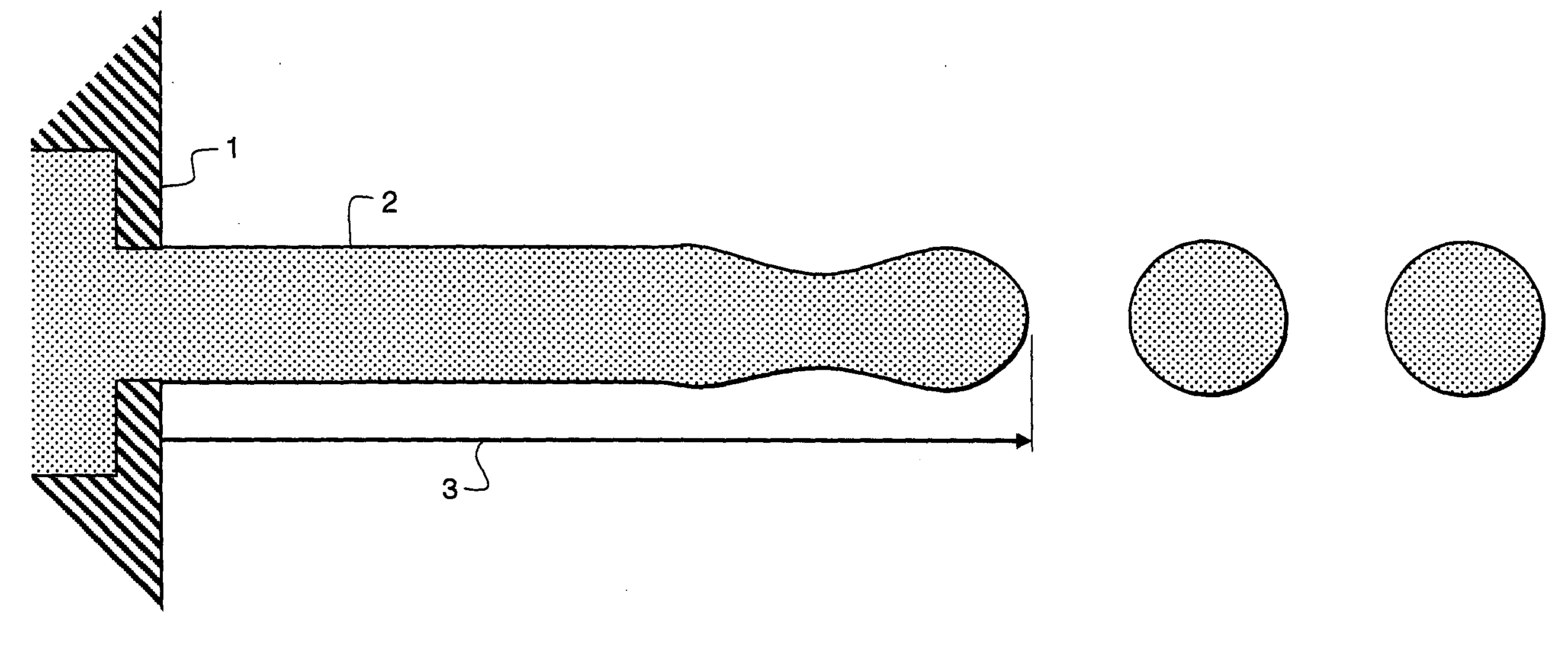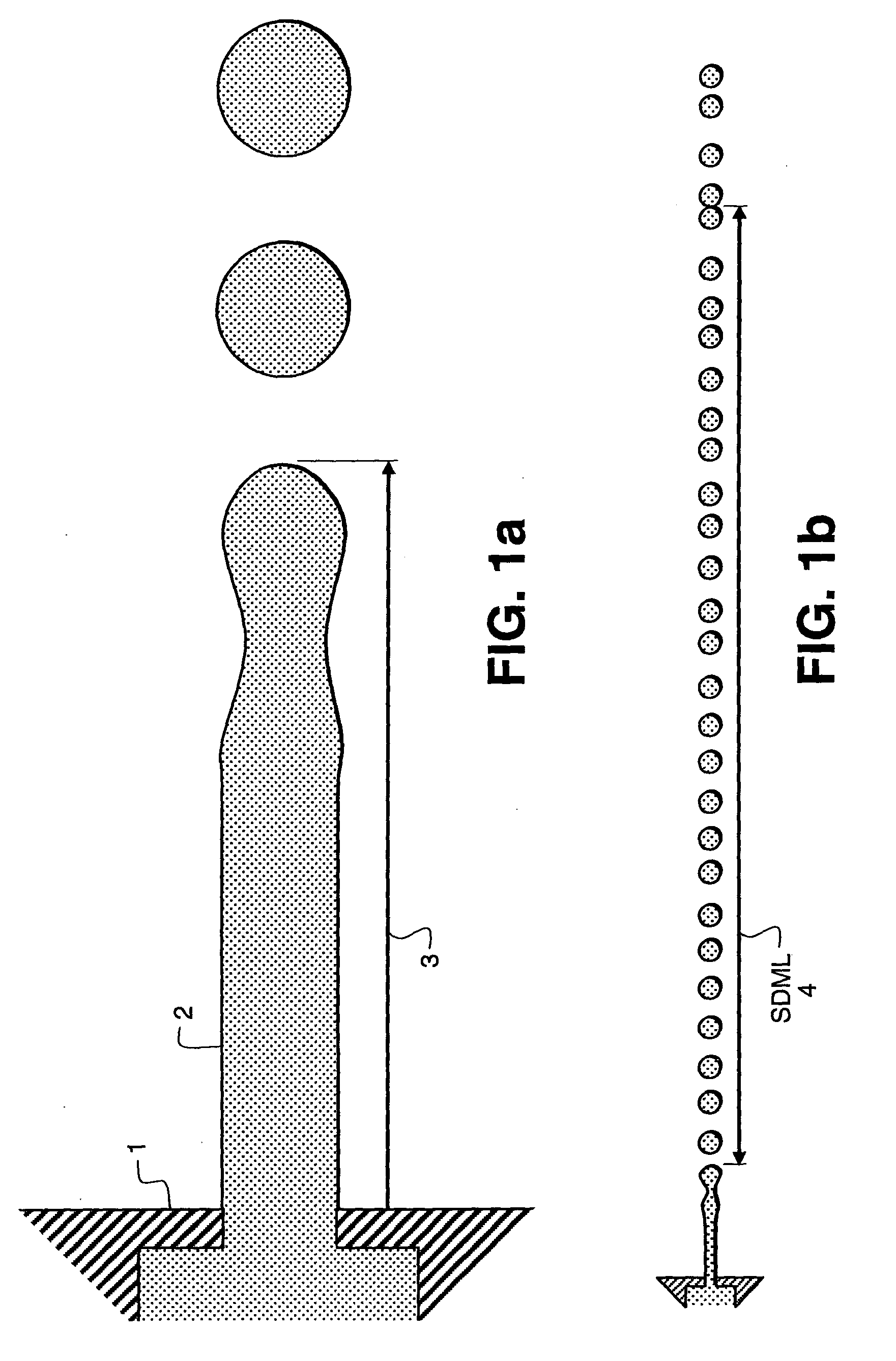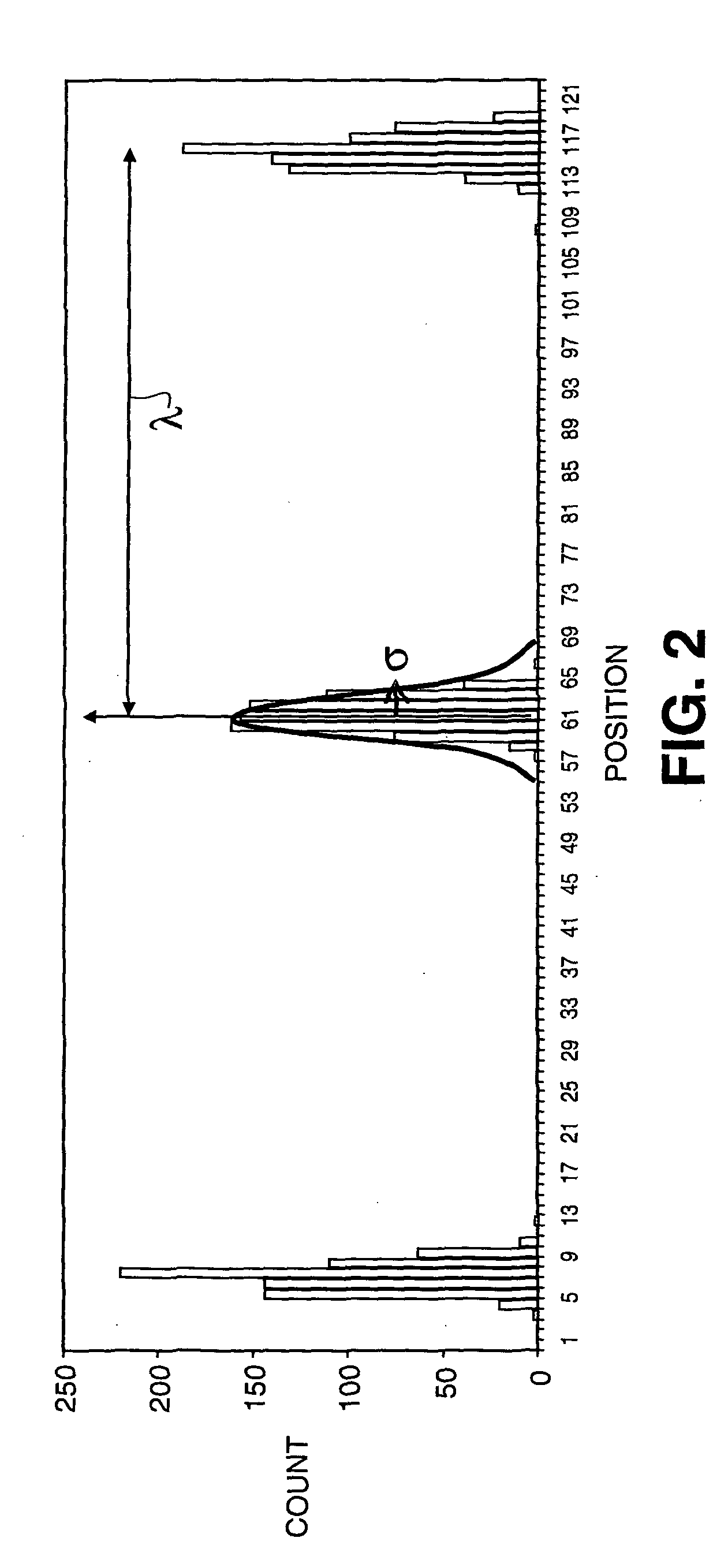Continuous inkjet printing
a technology of inkjet printing and continuous ink, which is applied in the direction of printing, other printing apparatus, etc., can solve the problems of unstable free jet, sorting error or placement error, and unstable free jet, so as to reduce the tendency for nozzle wear and minimise the fluctuation of drop velocity , the effect of maximizing the length of small drop merger
- Summary
- Abstract
- Description
- Claims
- Application Information
AI Technical Summary
Benefits of technology
Problems solved by technology
Method used
Image
Examples
Embodiment Construction
[0030]This invention relates to continuous ink jet printing rather than to drop on demand printing. Continuous ink jet printing uses a pressurized liquid source to supply a nozzle, which thereby produces a liquid jet. Such a liquid jet is intrinsically unstable and will naturally break to form a continuous stream of droplets. A perturbation to the jet at or close to the Rayleigh frequency, i.e. the natural frequency of break-up, will cause the jet to break regularly. The droplets of liquid or ink may then be directed as appropriate. FIG. 1a illustrates a nozzle 1 and jet 2, forming droplets a distance 3 from the nozzle 1. The distance 3 is the breakoff length. FIG. 1b illustrates the small drop merger length (SDML) 4 where neighbouring droplets with slightly differing velocities coalesce. Note the small drop merger length is the smallest distance at which neighbouring droplet merger is observed.
[0031]FIG. 2 illustrates the measurement of drop velocity variation. Repeated measurement...
PUM
 Login to View More
Login to View More Abstract
Description
Claims
Application Information
 Login to View More
Login to View More - R&D
- Intellectual Property
- Life Sciences
- Materials
- Tech Scout
- Unparalleled Data Quality
- Higher Quality Content
- 60% Fewer Hallucinations
Browse by: Latest US Patents, China's latest patents, Technical Efficacy Thesaurus, Application Domain, Technology Topic, Popular Technical Reports.
© 2025 PatSnap. All rights reserved.Legal|Privacy policy|Modern Slavery Act Transparency Statement|Sitemap|About US| Contact US: help@patsnap.com



